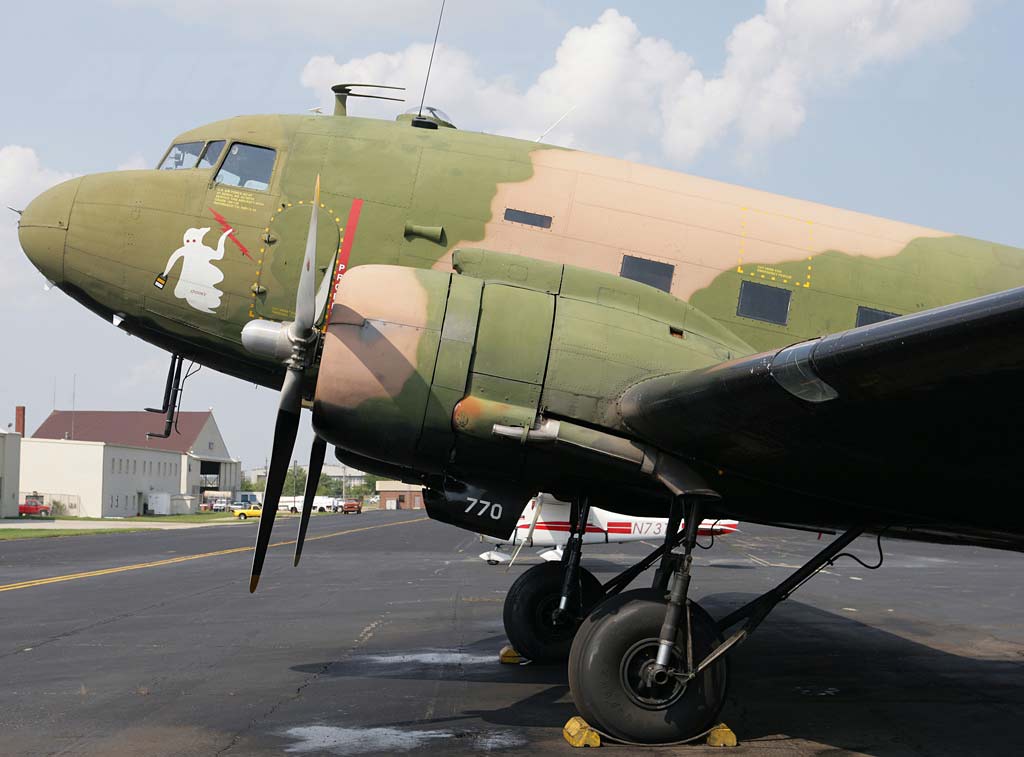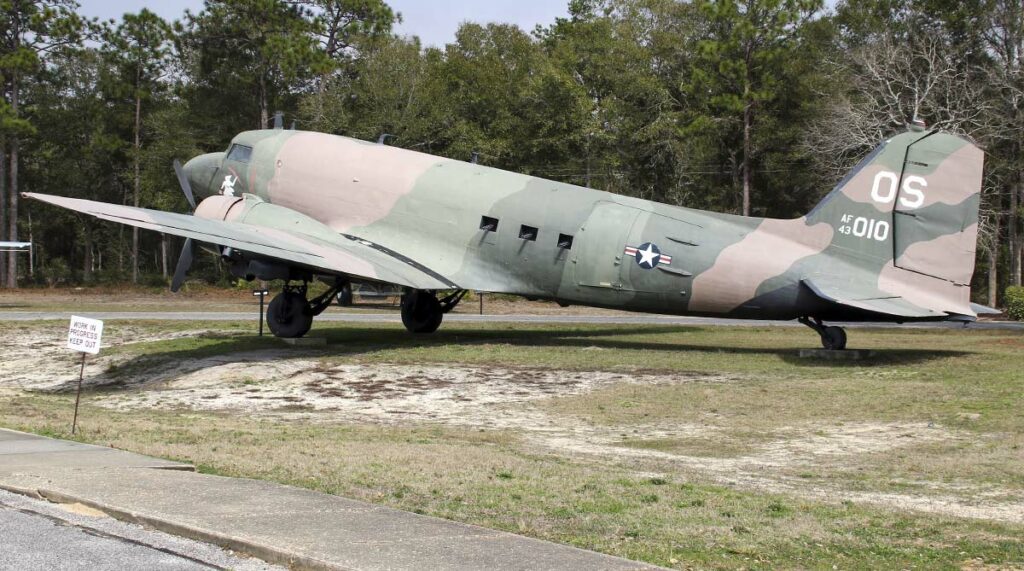The Douglas AC-47 Spooky, also known as “Puff the Magic Dragon,” was a groundbreaking gunship developed for close air support and aerial interdiction.
In Brief
The AC-47 Spooky was a modified Douglas C-47 Skytrain equipped with three side-firing 7.62 mm Minigun gatling guns, capable of delivering sustained and precise firepower against ground targets. It marked the inception of fixed-wing gunships, introducing a new dimension to air-ground combat. Featuring navigational and targeting systems that allowed it to circle a target for extended periods, the AC-47 could unleash a devastating volume of fire, creating a psychological and physical deterrent on the battlefield. Its legacy laid the foundation for subsequent gunship designs, demonstrating the effectiveness of side-firing weapons platforms for close air support and area denial operations.
The Douglas AC-47 Spooky revolutionized close air support and counterinsurgency operations with its innovative design and firepower, becoming an icon of the Vietnam War.

History of the Development of the Douglas AC-47 Spooky
During the early 1960s, amidst escalating conflict in Vietnam, the United States Air Force recognized the need for a platform capable of providing precise, sustained fire support to ground troops, particularly in counterinsurgency operations. The concept of a fixed-wing gunship emerged as a solution, leading to the development of the AC-47.
The program was launched by adapting surplus C-47 Skytrains, a testament to the aircraft’s reliability and versatility. The first AC-47 took flight in 1964, quickly proving its value in combat. The aircraft’s effectiveness in supporting ground forces, disrupting enemy movements, and protecting villages and outposts from enemy attacks underscored its significance in asymmetrical warfare settings.
The nickname “Spooky,” and its colloquial name “Puff the Magic Dragon,” referred to its intimidating presence and the mesmerizing effect of its gunfire, which resembled dragon’s breath.
Design of the Douglas AC-47 Spooky
The AC-47’s design was centered around its armament—three 7.62 mm General Electric Miniguns, each capable of firing up to 6,000 rounds per minute. These were mounted on the left side of the fuselage, allowing the aircraft to fly in a pylon turn, keeping its weapons trained on a single point on the ground.
The aircraft was also equipped with flares and illuminators for nighttime operations, enhancing its utility in 24-hour close air support. Despite its formidable firepower, the AC-47 maintained the simplicity and reliability of the C-47 platform. However, its reliance on visual targeting and vulnerability to anti-aircraft fire were notable drawbacks, limiting its operational use to areas with minimal air defense threats.
Performance of the Douglas AC-47 Spooky
Powered by two Pratt & Whitney R-1830 Twin Wasp radial engines, the AC-47 had a maximum speed of around 360 km/h (224 mph) and a range of 2,415 km (1,500 miles). Its endurance and loitering capability were pivotal, allowing it to provide extended support over a designated area. While not designed for high-speed or high-altitude operations, its performance was ideally suited for close air support and psychological operations.
Compared to its contemporaries and successors, like the AC-130 gunship, the AC-47 was less heavily armed and armored but set a precedent for the effectiveness of side-firing gunship tactics in close air support roles.
Variants of the Douglas AC-47 Spooky
The AC-47D was the primary variant deployed in Vietnam, with subsequent modifications focusing on armament and avionics upgrades. While no significant variants were developed beyond the initial configuration, the AC-47’s concept influenced the development of more advanced gunships, such as the AC-119 and AC-130, which featured more powerful armaments and sophisticated sensor systems.

Military Use and Combat of the Douglas AC-47 Spooky
The AC-47 saw extensive use in Vietnam by the United States Air Force, providing unparalleled support to ground forces, disrupting enemy operations, and serving as a psychological weapon. Its ability to deliver precise, sustained firepower made it invaluable in defending outposts, supporting search and rescue operations, and engaging enemy forces during nighttime operations.
The aircraft’s operational success in Vietnam demonstrated the potential of fixed-wing gunships, leading to the development of more advanced platforms. While primarily used by the U.S., the AC-47 also served in the air forces of several other nations, contributing to counterinsurgency efforts and internal security operations around the world.
The Douglas AC-47 Spooky stands as a pioneering development in military aviation, introducing the fixed-wing gunship concept that has since become integral to modern air forces. Its innovative design, formidable firepower, and operational versatility not only made a significant impact on the Vietnam war.
Back to Transport planes.